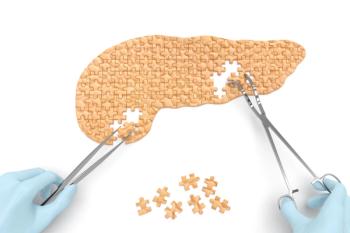
Improved Cancer Screening Methods Needed for Patients with Barrett’s Esophagus
A new study found that 25%-46% of esophageal adenocarcinomas in patients with newly diagnosed Barrett’s esophagus were categorized as post-endoscopy esophageal adenocarcinoma.
Interventions that improve detection of esophageal adenocarcinomas in patients with Barrett’s esophagus could help reduce rates of post-endoscopy esophageal adenocarcinoma and post-endoscopy esophageal neoplasia, according to new research published in Gastroenterology.1
Barrett’s esophagus is the only identifiable precursor lesion for esophageal adenocarcinomas, a lethal cancer that has seen increased incidence and mortality rates over the last several decades. In the United States in 2022 alone, there was an estimated 20640 new cases of the disease and over 16000 deaths.2
The new study, which was conducted by researchers from the University of Colorado’s Cancer Center, hopes to improve the screening and surveillance practices used for cancer detection in patients with Barrett’s esophagus.
“In the past, research was mostly focused on observational studies that were plagued by small sample sizes or selection bias,” Sachin Wani, MD, first author on the study, said in a release.3 “This means we didn’t have a true picture of how current screening practices aren’t working for nearly a quarter of esophageal adenocarcinoma patients.”
Investigators conducted a population-based cohort study to assess the magnitude and time-trend analysis of post-endoscopy esophageal adenocarcinoma and post-endoscopy esophageal neoplasia among patients with newly diagnosed Barrett’s esophagus. Data was gathered between 2006 and 2020 from national health registries in Denmark, Finland, and Sweden.
The study cohort included 20588 adult patients who had a newly diagnosed case of Barrett’s esophagus. Primary study outcomes were rates of post-endoscopy esophageal adenocarcinoma and post-endoscopy esophageal neoplasia.
Investigators found that 25% to 46% of esophageal adenocarcinomas in patients with newly diagnosed Barrett’s esophagus were categorized as post-endoscopy esophageal adenocarcinoma. In cases of esophageal adenocarcinomas or high-grade dysplasia, 17% to 27% were categorized as post-endoscopy esophageal neoplasia.
Additionally, a time-trend analysis discovered that incidence rates of both post-endoscopy esophageal adenocarcinoma and post-endoscopy esophageal neoplasia increased during the study period. Higher rates of post-endoscopy esophageal adenocarcinoma were associated with older age and males.
Study limitations include that high-grade dysplasia was only reported in the Swedish dataset, that data on certain health variables were not available, and that endoscopic data was also not available.
“We suggest providers use the highest quality endoscopy equipment, spend adequate time inspecting the Barrett’s segment and ensure that they have the most rigorous sampling protocols in place,” said Wani. “At the end of the day, we hope this data can influence providers in clinical practice to improve the quality of care and endoscopies for Barrett’s esophagus.”
References
1. Wani S, Holmberg D, Santoni G, et al. Magnitude and time-trends of postendoscopy esophageal adenocarcinoma and postendoscopy esophageal neoplasia in a population-based cohort study: The Nordic Barrett’s esophagus study. Gastroenterology. Published online 2023. doi:10.1053/j.gastro.2023.05.044
2. 1. Giaquinto, A.N., Sung, H., Miller, K.D.,et al. Breast Cancer Statistics, 2022. CA A Cancer J Clin. 2022;72:524-541. doi/10.3322/caac.21754
3. Milzer J. The Largest Study of Its Kind Shows a Need for Improvement in Esophageal Cancer Screenings. News Release. University of Colorado Cancer Center. July 20, 2023. Accessed July 27, 2023. https://news.cuanschutz.edu/cancer-center/the-largest-study-of-its-kind-shows-a-need-for-improvement-in-esophageal-cancer-screenings
Newsletter
Pharmacy practice is always changing. Stay ahead of the curve with the Drug Topics newsletter and get the latest drug information, industry trends, and patient care tips.





























































































































